#Wireless Communication Standard
Explore tagged Tumblr posts
Text
New BLUFFS Attack Lets Attackers Hijack Bluetooth Connections
Considering the widespread use of the well-established wireless communication standard and the versions impacted by the exploits, BLUFFS could work against billions of devices, including laptops, smartphones, and other mobile devices.
View On WordPress
#BLUFFS#communication#considering#exploits#impacted#standard#versions#wellestablished#widespread#wireless
0 notes
Text
Kintype Anatomical Diagram - 2024 Revamp!

Thought the old schematic was outdated enough, so here's a new one! Probably not realistically feasible in some parts, so take it more as a fun creative exercise :] More systems have been laid out due to a different style for showing everything.
Text transcript under the cut:
Jupiter DromaeOS - Rough Schematic
Height - 6'1/2" / 198cm
Tail Length - 4'8" / 142cm
Weight - 215lb / 97.5kg
Composition is largely of carbon, with smaller amounts of silicon, gold, iron, water, and other trace elements.
Skeletal System
Compacted carbon for support and structural integrity
Braced in certain areas
Ribs divided to allow movement of storage compartments
Electric System
Provides energy for most bodily functions
A. Power Supply Unit - Allows charging from an external energy grid. Requires power cable
B. Solar Panels - Carbon-perovskite photovoltaics for use when away from an energy grid. Usually hidden under feathers
C. Battery - Lithium-sulfur solid state battery that provides ~48 hours of waketime when fully charged
D. Solid State Drive - Extra storage capacity for important memories and information
E. Graphics Processing Unit - Renders AR and holo-displays, as well as internal simulations and dreams
Circulatory System
Circulates around the body a kind of “blood” made of nanites and liquid coolant. Waste heat ejected through fans on the back of the body
F. Nanite Hub - Pumps nanite blood throughout the body. Also houses a nanite fabricator and programmer
Nervous System
Houses most processing power, tactile sense, and consciousness. Comprised of artificial neurons that require a constant supply of electricity
G. Central Processing Unit - Standard issue synthetic humanoid brain. Structure indicates a nontrivial level of neurodivergence
Digestive System
Processes traditional food and certain kinds of inorganic matter. Essential for self-repair and can have a positive effect on mental state
H. Crusher - For chewing both organic and inorganic matter. Soundproofed by skeletal structure in snout
I. Pseudostomach - Dissolves consumed material with nanites rather than acid
J. Graphene Production Chambers - Produces graphene for use in repairs via flash joule heating. Leftover material deposited in lowest storage compartments for use as printer feedstock
Storage Compartments
Built-in drawers for storing goods and materials. Can be refrigerated via circulatory system
Sensory and Communication Devices
K. Microphones - Ear equivalent, input volume can be adjusted or muted
L. Speaker - Vocal output device, can produce a wide array of sounds and can be modulated
M. Eyes - Light passes through display screens used for visual communication
N. AR lens - Projects private-use visual overlays
O. Retinas - Collects modified light signal and sends to CPU and GPU
P. Wireless Internet Receiver - Fully-controlled access to decentralized internet. Uses secondary displays rather than direct input into CPU
Q. Nostrils & Tongue - Detect presence of chemicals in air and food, output converted into signals directed towards CPU
Rockets
Provide mobility within aerospace
R. Microthrusters - Small ion thrusters for stabilization in microgravity
S. Liquid Fuel/Oxidizer Storage - Frozen when not in use to reduce balance issues
T. Pumps - Carry fuel and oxidizer into combustion chamber
U. Combustion Chamber - Mixes and burns fuel and oxidizer
V. Nozzle - Rocket exhaust exits through soles to create thrust
#furry art#furry sfw#clean furry#anthro#worldbuilding#original character#my oc art#kintype#oc: jupiter#raptor#dromaeosaur#robot oc#robot dinosaur#diagram#small art blog#small artist
15 notes
·
View notes
Text
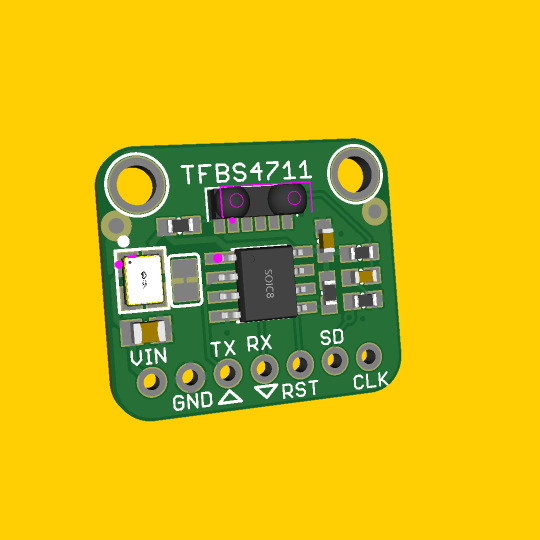
IrDA codec board 🔧📡🕰️
We've been designing all sorts of IR transmitters and receivers for the Adafruit shop lately, and a chance discussion got us thinking about IrDA - an old wireless protocol used in some PDAs, watches, laptops and toys. its not used anymore - bluetooth LE does a way better job - but there's probably some cases where IrDA hacking could be useful such as communicating with retro devices or if you want an RF-less wireless link. here's a board that combines a TFBS4711 transceiver (https://www.digikey.com/short/jn43cz31) with a MCP2112 codec (https://www.digikey.com/short/m8tp3708). you can communicate at 115.2kbps with RX and TX lines just like any UART. 115.2kbps is the standard baudrate. or, provide your own CLK for something like 9600 baud.
#adafruit#irda#ir#wirelessprotocol#retrotech#uartcommunication#electronicsdiy#communicationspeed#tfbs4711#mcp2112#hackoldtech#nostalgiatech#rfcommunication
11 notes
·
View notes
Text
“Americans, your calls and texts can be monitored by Chinese spies,” a Washington Post opinion piece recently headlined. China has “growing cyber-sophistication and relentless ambition to undermine U.S. infrastructure” another Post article reported. Some analyses trace the recent exploitation to a telecommunications network backdoor created early in the era of digital networks to allow for court-authorized wiretaps.
When the digital wiretap law was passed in 1994, no one foresaw the kind of sophisticated intrusions apparently developed by the Chinese. It is an experience that we must remember as the design of digital network technology continues to evolve.
I helped negotiate the 1994 Communications Assistance for Law Enforcement Act (CALEA) that, some fear, created the exploitable access for Chinese spies. The concern at the time was that the evolution from analog to digital telecommunications was hindering law enforcement. “Some of the problems encountered by law enforcement relate to the explosive growth of cellular and other wireless services,” the House committee report explained. “[T]he increasing amount of transactional data generated by the millions of users of on-line services” was an accompanying problem. Written 30 years ago, it is a description of today’s communications environment, in which wireless networks deliver online digital information.
At the time, I was the CEO of the Cellular Telecommunications and Internet Association (CTIA), the wireless industry’s trade association. Along with wired communications providers, our members were concerned about the way the FBI was proposing to monitor communications across the new digital technology. After detailed and lengthy negotiations, industry and law enforcement mutually agreed to a result that addressed the FBI’s concerns about access to the new technology, while also addressing industry concerns.
On August 11, 1994, I sat next to FBI Director Louis Freeh before a joint House and Senate hearing to announce that we had reached an agreement on the CALEA legislation and to urge its passage. That what we jointly endorsed that day could, decades later, be potentially hackable by Chinese spies was not part of that discussion.
Today—30 years after CALEA—a new digital wireless technology promoted by both the industry and government is raising new cyber risks. Called Open Radio Access Network (O-RAN), it is a new technical standard that seeks to copy for telecommunications infrastructure the scale and savings enjoyed by the computer industry’s interoperability of different pieces of network equipment from different vendors. In O-RAN, the network functions once performed by purpose-built hardware are instead virtualized in software. Based on input from the Federal Communications Commission (FCC) and Department of Commerce, the software is broken into multiple layers, thus expanding the number of vendors.
The O-RAN concept is an important step forward that will deliver increased capabilities at decreased costs. Accompanying these advantages, however, is the challenge to mitigate the increased risk of cyberattacks resulting from software that relies in part on open-source code running on commodity hardware.
Earlier networks ran on proprietary equipment utilizing proprietary software that offered focused protection against attacks. Moving more functions to hackable software that is disaggregated from a purpose-built network appliance creates new pathways to attack these new networks.
Another attractive aspect of O-RAN is how the shift to virtualize hardware breaks the chokehold of the traditional suppliers of network equipment. This advantages cybersecurity because it creates alternatives to Chinese hardware manufacturers, such as Huawei. Yet, this too comes with the countervailing paradox that such supplier diversity represents another increase in the number of attack trajectories in the networks.
As the European Union’s Report on the Cybersecurity of Open Radio Access Networks concluded, while there are security benefits to the diversification of suppliers, “by introducing a new approach, new interfaces and new types of RAN components potentially coming from multiple suppliers, Open RAN would exacerbate a number of the security risks of 5G networks and expand the attack surface.”
Network operators and law enforcement were reportedly blindsided by the ability of Chinese hackers to create advanced persistent threats (APTs) to exploit CALEA. This experience, however, is but the most current of many warnings that the networks on which our nation relies are vulnerable. Whatever the outcome of the ongoing investigation, the latest exploitation should send a message that we need cybersecurity as a forethought, rather than an afterthought, in the design of digital networks, accompanied by ongoing oversight of network security.
Looking back to go forward
Twenty years after CALEA passed, I was chairman of the FCC, the agency responsible for America’s networks. As chairman, I tried to work with network providers to develop cybersecurity standards that were flexible enough to evolve with the technology and the ever-evolving attack techniques of those seeking to exploit the networks. The irrefutable fact is that every single one of the cyberattacks that affect our nation traverse, at one point or another in their transmission, a private network regulated by the FCC.
What we proposed in 2014 was that the companies implement and report on their adherence to the National Institute of Standards and Technology’s (NIST) Cybersecurity Framework. The NIST Framework is a collection of best-practice internal controls developed collaboratively with industry that is continually evolving to help companies protect against cyberattacks. Along with implementing the voluntary NIST Framework, we asked the industry to identify where they set their objective cyber-risk threshold, their progress toward implementation of the Framework, and the steps taken to cure internal control shortfalls.
It was a new approach to network oversight that stopped short of regulatory micromanagement in favor of standards-based expectations. “The communications sector is at a critical juncture,” I said in a June 14, 2014, speech laying out the new program. “We know those [cyber] threats are growing. And we have agreed that industry-based solutions are the right approach… We will implement this approach and measure results. It is those results that will tell us what, if any, next steps must be taken.”
Unfortunately, the effort fell apart when the companies resisted a plan for reporting to the FCC. The industry argued the Department of Homeland Security (DHS) was a better place for such oversight. DHS, of course, had no regulatory authority over the networks. The Trump FCC then followed the industry’s preference and ceased the FCC initiative.
DHS subsequently established the Cybersecurity and Infrastructure Security Agency (CISA), which is doing great work to advance best practices across the economy. Absent regulatory authority, however, such efforts can only go so far. Cyber risk is a business risk; at the end of the day, how much a company invests in risk reduction is a bottom-line decision. The appropriate role for a regulator such as the FCC should be to establish expectations for such decisions to stimulate sufficient cyber protection by the nation’s networks—and then to inspect the results.
Today, the FCC’s minimal cybersecurity reporting obligations are constrained to cyber incidents that lead to outages, with no reporting requirements for compromises to confidentiality or network integrity. Amazingly, through its detailed reporting requirements on cyber issues, the Securities and Exchange Commission (SEC) has more information on cyber shortfalls than the regulator charged with protecting America’s networks.
Thirty years ago, government and industry worked together to protect public safety and national security in a rapidly evolving digital environment. Ten years ago, industry and government could not come to terms with ongoing cybersecurity oversight at the FCC. The current cyberattacks are a clarion call that network security must be both a forethought in network design and an ongoing regulatory responsibility for the agency entrusted with oversight of the nation’s networks.
4 notes
·
View notes
Text
Dimensity 7300 : Unbelievable Speed and Power Unleashed
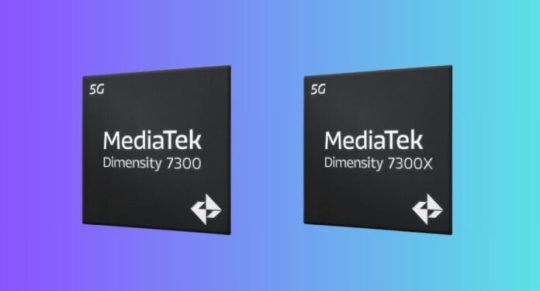
MediaTek launched the 4nm Dimensity 7300 and Dimensity 7300X high-end mobile device processors today. Best-in-class power economy and performance make Dimensity 7300 chipsets ideal for AI-enhanced computing, faster gaming, better photography, and effortless multitasking. Dimensity 7300X supports twin displays for flip-style foldable devices.
Both MediaTek Dimensity 7300 chipsets have 2.5GHz octa-core CPUs with 4X Arm Cortex-A78 and A55 cores. 4nm reduces A78 core power consumption by 25% over Dimensity 7050. To speed up gaming, the CPU combines the most recent Arm Mali-G615 GPU with a number of MediaTek HyperEngine optimisations. The Dimensity 7300 series provides 20% quicker FPS and 20% more energy efficiency than competing options. The new chips optimise 5G and Wi-Fi game connections, use clever resource optimisation, support Dual-Link True Wireless Stereo Audio and Bluetooth LE Audio technology to significantly improve gaming experiences.
According to MediaTek’s Wireless Communications Business Deputy General Manager Dr. According to Yenchi Lee, “The MediaTek Dimensity 7300 chips will help integrate the newest AI and connectivity technologies consumers can stream and game seamlessly. “Furthermore, the dual display capability of the Dimensity 7300X allows OEMs to create creative new form factors.”
With compatibility for a 200MP primary camera and a premium-grade 12-bit HDR-ISP, the MediaTek Imagiq 950 is another enhanced photographic feature available with the Dimensity 7300 chipsets. New hardware engines provide accurate noise reduction (MCNR), face detection (HWFD), and video HDR in the Dimensity 7300. This allows users to take beautiful pictures and videos in any kind of lighting. Compared to the Dimensity 7050, live focus and photo remastering are 1.3X and 1.5X faster, respectively. In addition, 4K HDR video may be recorded with a dynamic range that is more than 50% broader than competing solutions, allowing users to capture more detail in their recordings.
The MediaTek APU 655 doubles the performance of the Dimensity 7050 while also greatly increasing the efficiency of AI tasks. Also, in order to reduce memory requirements for larger AI models and more effectively use memory bandwidth, the Dimensity 7300 chips support new mixed precision data types.
The Dimensity 7300 SoCs enable global HDR standards and remarkably detailed WFHD+ displays with 10-bit true colour thanks to MediaTek’s built-in MiraVision 955. This improves media streaming and playing. Additionally, OEMs find it simpler to satisfy the expanding market demand for cutting-edge form factors thanks to the Dimensity 7300X’s specialised support for dual display flip phones.
Dimensity 7300 and Dimensity 7300X important features
With MediaTek’s own optimisations and a full suite of R16 power-saving advancements, MediaTek 5G UltraSave 3.0+ technology offers 13–30% more power efficiency than competing options in typical 5G sub-6GHz connectivity settings.
Supporting 3CC carrier aggregation up to 3.27Gb/s 5G downstream speed, which enables better downlink rates in suburban and urban settings.
Support for multi-band Wi-Fi 6E allows for dependable and quick multi-gigabit wireless access.
Users will have more options with dual 5G SIM capability and dual VoNR.
This was addressed by MediaTek’s Dimensity 7300 series in May 2024. The Dimensity 7300 and 7300X chipset series boosts high-end to smartphone and foldable device performance, energy efficiency, and AI.
Constructed for Rapidity and Effectiveness
A powerful octa-core CPU powers the Dimensity 7300. This combo is ideal for gaming and multitasking with four 2.5 GHz Arm Cortex-A78 cores. Four Arm Cortex-A55 cores, which are energy-efficient, complement these and guarantee dependable performance for daily use. In comparison to the Dimensity 7050, this combination represents a major advancement.
The advanced 4nm manufacturing process is a feature of the 7300 series. This corresponds to a 25% decrease in power usage over the 6nm technique utilised in earlier generations. Users will benefit from longer battery life as a result, while manufacturers can create sleeker devices without compromising functionality.
Superpower in Graphics
Immersive mobile experiences require strong visuals. The Dimensity 7300 has an Arm Mali-G615 GPU to fix this. This graphics processor runs even the most demanding games smoothly, and MediaTek’s HyperEngine technology stabilises the network and efficiently manages resources. MediaTek says the 7300 series is appealing to mobile gamers due to its 20% higher frame rates (FPS) and energy economy.
AI Gains Strength
AI is increasingly changing the smartphone experience, enabling intelligent assistants, better photography, and facial recognition. The Dimensity 7300 uses the MediaTek APU 655, following this trend. This AI processing unit doubles the efficiency of the Dimensity 7050, resulting in a notable performance boost. New mixed precision data types, which enable more effective memory bandwidth utilisation and lower memory requirements for larger AI models, are also supported by the 7300 series. Future smartphones will be able to incorporate even more advanced AI features thanks to this.
Gorgeous Images
For a fascinating mobile experience, a stunning display is essential; a strong processor is only half the story. This demand is met by the Dimensity 7300 series, which supports powerful screens. With the ability to support WFHD+ resolutions at frame rates of up to 120 Hz, these chipsets guarantee fluid and visually spectacular images. For an even smoother user experience, the 7300 series also supports Full HD+ screens at an even higher refresh rate of 144Hz.
Concentrate on Take Pictures
Users now place a greater value on mobile photography, and the Dimensity 7300 series delivers. The chip has MediaTek’s Imagiq 950 image signal processor (ISP), which provides sophisticated photographic features. With the 12-bit HDR pipeline supported by this ISP, detailed information and brilliant colours may be captured. Furthermore, the Imagiq 950 enables features like video HDR, face detection, and precise noise reduction, guaranteeing beautiful images and movies in a range of lighting scenarios. The 7300 series stands out for its ability to enable dual simultaneous video capture, which allows for the development of more imaginative content.
A Set of Chips for Foldables
A 7300 variation called the Dimensity 7300X goes one step farther by being designed with foldable cellphones in mind. One essential component of these cutting-edge gadgets is dual display compatibility, which this chipset provides. Manufacturers may design foldable phones with seamless experiences on both the cover and main displays thanks to the 7300X.
Mobile’s Future
Mobile processing power has advanced significantly with the release of the Dimensity 7300 series. This chipset family, with its emphasis on efficiency, performance, AI capabilities, and support for cutting-edge technologies like foldable devices and high refresh rate screens, is positioned to have a significant impact on the direction of mobile technology. The Dimensity 7300 series offers makers a strong and adaptable foundation to develop next-generation smartphones that offer outstanding user experiences as smartphones continue to advance.
Read more on govindhtech.com
#dimensity7300x#MediaTekDimensity#AI#artificialintelligence#AITechnology#mobiletechnology#smartphone#aimodel#CPU#cpupower#news#technews#technology#technologynews#technologytrends#govindhtech
7 notes
·
View notes
Text
How-To IT
Topic: Core areas of IT
1. Hardware
• Computers (Desktops, Laptops, Workstations)
• Servers and Data Centers
• Networking Devices (Routers, Switches, Modems)
• Storage Devices (HDDs, SSDs, NAS)
• Peripheral Devices (Printers, Scanners, Monitors)
2. Software
• Operating Systems (Windows, Linux, macOS)
• Application Software (Office Suites, ERP, CRM)
• Development Software (IDEs, Code Libraries, APIs)
• Middleware (Integration Tools)
• Security Software (Antivirus, Firewalls, SIEM)
3. Networking and Telecommunications
• LAN/WAN Infrastructure
• Wireless Networking (Wi-Fi, 5G)
• VPNs (Virtual Private Networks)
• Communication Systems (VoIP, Email Servers)
• Internet Services
4. Data Management
• Databases (SQL, NoSQL)
• Data Warehousing
• Big Data Technologies (Hadoop, Spark)
• Backup and Recovery Systems
• Data Integration Tools
5. Cybersecurity
• Network Security
• Endpoint Protection
• Identity and Access Management (IAM)
• Threat Detection and Incident Response
• Encryption and Data Privacy
6. Software Development
• Front-End Development (UI/UX Design)
• Back-End Development
• DevOps and CI/CD Pipelines
• Mobile App Development
• Cloud-Native Development
7. Cloud Computing
• Infrastructure as a Service (IaaS)
• Platform as a Service (PaaS)
• Software as a Service (SaaS)
• Serverless Computing
• Cloud Storage and Management
8. IT Support and Services
• Help Desk Support
• IT Service Management (ITSM)
• System Administration
• Hardware and Software Troubleshooting
• End-User Training
9. Artificial Intelligence and Machine Learning
• AI Algorithms and Frameworks
• Natural Language Processing (NLP)
• Computer Vision
• Robotics
• Predictive Analytics
10. Business Intelligence and Analytics
• Reporting Tools (Tableau, Power BI)
• Data Visualization
• Business Analytics Platforms
• Predictive Modeling
11. Internet of Things (IoT)
• IoT Devices and Sensors
• IoT Platforms
• Edge Computing
• Smart Systems (Homes, Cities, Vehicles)
12. Enterprise Systems
• Enterprise Resource Planning (ERP)
• Customer Relationship Management (CRM)
• Human Resource Management Systems (HRMS)
• Supply Chain Management Systems
13. IT Governance and Compliance
• ITIL (Information Technology Infrastructure Library)
• COBIT (Control Objectives for Information Technologies)
• ISO/IEC Standards
• Regulatory Compliance (GDPR, HIPAA, SOX)
14. Emerging Technologies
• Blockchain
• Quantum Computing
• Augmented Reality (AR) and Virtual Reality (VR)
• 3D Printing
• Digital Twins
15. IT Project Management
• Agile, Scrum, and Kanban
• Waterfall Methodology
• Resource Allocation
• Risk Management
16. IT Infrastructure
• Data Centers
• Virtualization (VMware, Hyper-V)
• Disaster Recovery Planning
• Load Balancing
17. IT Education and Certifications
• Vendor Certifications (Microsoft, Cisco, AWS)
• Training and Development Programs
• Online Learning Platforms
18. IT Operations and Monitoring
• Performance Monitoring (APM, Network Monitoring)
• IT Asset Management
• Event and Incident Management
19. Software Testing
• Manual Testing: Human testers evaluate software by executing test cases without using automation tools.
• Automated Testing: Use of testing tools (e.g., Selenium, JUnit) to run automated scripts and check software behavior.
• Functional Testing: Validating that the software performs its intended functions.
• Non-Functional Testing: Assessing non-functional aspects such as performance, usability, and security.
• Unit Testing: Testing individual components or units of code for correctness.
• Integration Testing: Ensuring that different modules or systems work together as expected.
• System Testing: Verifying the complete software system’s behavior against requirements.
• Acceptance Testing: Conducting tests to confirm that the software meets business requirements (including UAT - User Acceptance Testing).
• Regression Testing: Ensuring that new changes or features do not negatively affect existing functionalities.
• Performance Testing: Testing software performance under various conditions (load, stress, scalability).
• Security Testing: Identifying vulnerabilities and assessing the software’s ability to protect data.
• Compatibility Testing: Ensuring the software works on different operating systems, browsers, or devices.
• Continuous Testing: Integrating testing into the development lifecycle to provide quick feedback and minimize bugs.
• Test Automation Frameworks: Tools and structures used to automate testing processes (e.g., TestNG, Appium).
19. VoIP (Voice over IP)
VoIP Protocols & Standards
• SIP (Session Initiation Protocol)
• H.323
• RTP (Real-Time Transport Protocol)
• MGCP (Media Gateway Control Protocol)
VoIP Hardware
• IP Phones (Desk Phones, Mobile Clients)
• VoIP Gateways
• Analog Telephone Adapters (ATAs)
• VoIP Servers
• Network Switches/ Routers for VoIP
VoIP Software
• Softphones (e.g., Zoiper, X-Lite)
• PBX (Private Branch Exchange) Systems
• VoIP Management Software
• Call Center Solutions (e.g., Asterisk, 3CX)
VoIP Network Infrastructure
• Quality of Service (QoS) Configuration
• VPNs (Virtual Private Networks) for VoIP
• VoIP Traffic Shaping & Bandwidth Management
• Firewall and Security Configurations for VoIP
• Network Monitoring & Optimization Tools
VoIP Security
• Encryption (SRTP, TLS)
• Authentication and Authorization
• Firewall & Intrusion Detection Systems
• VoIP Fraud DetectionVoIP Providers
• Hosted VoIP Services (e.g., RingCentral, Vonage)
• SIP Trunking Providers
• PBX Hosting & Managed Services
VoIP Quality and Testing
• Call Quality Monitoring
• Latency, Jitter, and Packet Loss Testing
• VoIP Performance Metrics and Reporting Tools
• User Acceptance Testing (UAT) for VoIP Systems
Integration with Other Systems
• CRM Integration (e.g., Salesforce with VoIP)
• Unified Communications (UC) Solutions
• Contact Center Integration
• Email, Chat, and Video Communication Integration
2 notes
·
View notes
Text
WHAT IS MOBILE ?
A mobile phone, or cell phone,[a] is a portable telephone that allows users to make and receive calls over a radio frequency link while moving within a designated telephone service area, unlike fixed-location phones (landline phones). This radio frequency link connects to the switching systems of a mobile phone operator, providing access to the public switched telephone network (PSTN). Modern mobile telephony relies on a cellular network architecture, which is why mobile phones are often referred to as 'cell phones' in North America.
Mobile phones also support a variety of multimedia capabilities, such as digital photography, video recording, and gaming. In addition, they enable multimedia playback and streaming, including video content, as well as radio and television streaming. Furthermore, mobile phones offer satellite-based service
The first handheld mobile phone was demonstrated by Martin Cooper of Motorola in New Y
Mobile phones are considered an important human invention as they have been one of the most widely used and sold pieces of consumer technology.[7] The growth in popularity has been rapid in some places, for example, in the UK, the total number of mobile phones overtook the number of houses in 1999.[8] Today, mobile phones are globally ubiquitous,[9] and in almost half the world's countries, over 90% of the population owns at least one.[10]
History
Main article: History of mobile phonesMartin Cooper of Motorola, shown here in a 2007 reenactment, made the first publicized handheld mobile phone call on a prototype DynaTAC model on 3 April 1973.In 2001, the third-generation (3G) was launched in Japan by NTT DoCoMo on the WCDMA standard.[15] This was followed by 3.5G or 3G+ enhancements based on the high-speed packet access (HSPA) family, allowing UMTS networks to have higher data transfer speeds and capacity. 3G is able to provide mobile broadband access of several Mbit/s to smartphones and mobile modems in laptop computers. This ensures it can be applied to mobile Internet access, VoIP, video calls, and sending large e-mail messages, as well as watching videos, typically in standard-definition quality.
By 2009, it had become clear that, at some point, 3G networks would be overwhelmed by the growth of bandwidth-intensive applications, such as streaming media.[16] Consequently, the industry began looking to data-optimized fourth-generation (4G) technologies, with the promise of speed improvements up to tenfold over existing 3G technologies. The first publicly available LTE service was launched in Scandinavia by TeliaSonera in 2009. In the 2010s, 4G technology has found diverse applications across various sectors, showcasing its versatility in delivering high-speed wireless communication, such as mobile broadband, the internet of things (IoT), fixed wireless access, and multimedia streaming (including music, video, radio, and television).
2 notes
·
View notes
Text
Best Partner for Wireless Modules: A Comprehensive Antenna Selection Guide
n the field of wireless communication, antenna selection is crucial. It not only affects the coverage range and transmission quality of signals but also directly relates to the overall performance of the system. Among various wireless modules, finding the right antenna can maximize their potential, ensuring stable and efficient data transmission.
When designing wireless transceiver devices for RF systems, antenna design and selection are essential components. A high-quality antenna system can ensure optimal communication distances. Typically, the size of antennas of the same type is proportional to the wavelength of the RF signal; as signal strength increases, the number of required antennas also grows.
Antennae can be categorized as internal or external based on their installation location. Internal antennas are installed within the device, while external antennas are mounted outside.
In situations where space is limited or there are multiple frequency bands, antenna design becomes more complex. External antennas are usually standard products, allowing users to simply select the required frequency band without needing additional tuning, making them convenient and easy to use.
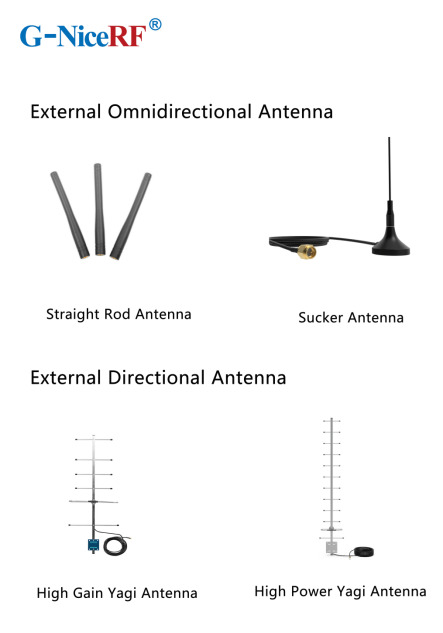
What are the main types of antennas?
External Antennas: These antennas can be classified into omnidirectional antennas and directional antennas based on the radiation pattern.
Internal Antennas: These antennas refer to antennas that can be placed inside devices.
Omnidirectional Antennas: These antennas radiate signals uniformly in the horizontal plane, making them suitable for applications that require 360-degree coverage, such as home Wi-Fi routers and mobile devices.
Directional Antennas: These antennas have a high emission and reception strength in one or more specific directions, while the strength is minimal or zero in others. Directional antennas are primarily used to enhance signal strength and improve interference resistance.
PCB Antennas: These antennas are directly printed on the circuit board and are suitable for devices with limited space, commonly used in small wireless modules and IoT devices.
FPC Antennas: FPC antennas are flexible printed circuit antennas that are lightweight, efficient, and easy to integrate.
Concealed Antennas: Designed for aesthetic purposes, concealed antennas can be hidden within devices or disguised as other objects, making them suitable for applications where appearance is important without compromising signal quality.
Antenna Selection Guide
When selecting the appropriate antenna for a communication module, it's essential to first determine whether to use an internal or external antenna based on the module's structure.
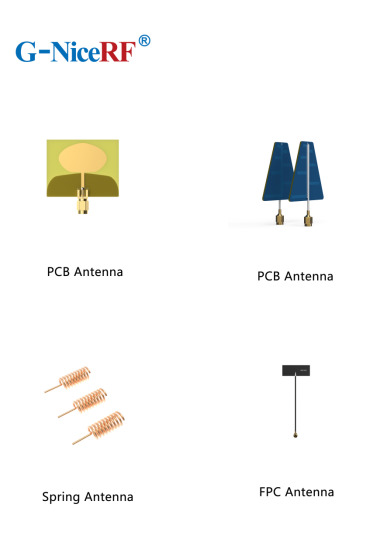
External Antennas: These antennas offer high gain, are less affected by the environment, and can save development time, but they may take up space and impact the product's aesthetics.
Internal Antennas: These have relatively high gain and are installed within the device, maintaining a clean and appealing exterior.
Sucker Antennas: These provide high gain and are easy to install and secure.
Copper Rod Sucker Antennas: Made from large-diameter pure copper radiators, these are highly efficient with a wide bandwidth.
Rubber Rod Antennas: Offer moderate gain at a low cost.
Fiberglass Antennas: Suitable for harsh environments and ideal for long-distance signal

External Directional Antennas
Typically used in environments with long communication distances, small signal coverage areas, and high target density.
Panel Antennas have high efficiency, are compact, and easy to install, while considering the impact of gain and radiation area Yagi Antennas offer very high gain, are slightly larger, and have strong directionality, making them suitable for long-distance signal transmission; however, attention must be paid to the antenna's orientation during use
Internal Antenna Selection
Most internal antennas are affected by environmental factors and may require custom design or impedance matching
Spring Antennas are cost-effective but have low gain and narrow bandwidth, often requiring tuning for good matching when installed Ceramic Patch Antennas occupy minimal space and perform well, but have a narrow bandwidth
For details, please click:https://www.nicerf.com/products/ Or click:https://nicerf.en.alibaba.com/productlist.html?spm=a2700.shop_index.88.4.1fec2b006JKUsd For consultation, please contact NiceRF (Email: [email protected]).
2 notes
·
View notes
Text
Beginner's learning to understand Xilinx product series including Zynq-7000, Artix, Virtex, etc.
Xilinx (Xilinx) as the world's leading supplier of programmable logic devices has always been highly regarded for its excellent technology and innovative products. Xilinx has launched many excellent product series, providing a rich variety of choices for different application needs.

I. FPGA Product Series
Xilinx's FPGA products cover multiple series, each with its own characteristics and advantages.
The Spartan series is an entry-level product with low price, power consumption, and small size. It uses a small package and provides an excellent performance-power ratio. It also contains the MicroBlaze™ soft processor and supports DDR3 memory. It is very suitable for industrial, consumer applications, and automotive applications, such as small controllers in industrial automation, simple logic control in consumer electronics, and auxiliary control modules in automotive electronics.
The Artix series, compared to the Spartan series, adds serial transceivers and DSP functions and has a larger logic capacity. It achieves a good balance between cost and performance and is suitable for mid-to-low-end applications with slightly more complex logic, such as software-defined radios, machine vision, low-end wireless backhaul, and embedded systems that are cost-sensitive but require certain performance.
The Kintex series is a mid-range series that performs excellently in terms of the number of hard cores and logic capacity. It achieves an excellent cost/performance/power consumption balance for designs at the 28nm node, provides a high DSP rate, cost-effective packaging, and supports mainstream standards such as PCIe® Gen3 and 10 Gigabit Ethernet. It is suitable for application scenarios such as data centers, network communications, 3G/4G wireless communications, flat panel displays, and video transmission.
The Virtex series, as a high-end series, has the highest performance and reliability. It has a large number of logic units, high-bandwidth serial transceivers, strong DSP processing capabilities, and rich storage resources, and can handle complex calculations and data streams. It is often used in application fields with extremely high performance requirements such as 10G to 100G networking, portable radars, ASIC prototyping, high-end military communications, and high-speed signal processing.

II. Zynq Product Series
The Zynq - 7000 series integrates ARM and FPGA programmable logic to achieve software and hardware co-design. It provides different models with different logic resources, storage capacities, and interface numbers to meet different application needs. The low-power consumption characteristic is suitable for embedded application scenarios such as industrial automation, communication equipment, medical equipment, and automotive electronics.
The Zynq UltraScale + MPSoC series has higher performance and more abundant functions, including more processor cores, larger storage capacities, and higher communication bandwidths. It supports multiple security functions and is suitable for applications with high security requirements. It can be used in fields such as artificial intelligence and machine learning, data center acceleration, aerospace and defense, and high-end video processing.
The Zynq UltraScale + RFSoC series is similar in architecture to the MPSoC and also has ARM and FPGA parts. However, it has been optimized and enhanced in radio frequency signal processing and integrates a large number of radio frequency-related modules and functions such as ADC and DAC, which can directly collect and process radio frequency signals, greatly simplifying the design complexity of radio frequency systems. It is mainly applied in radio frequency-related fields such as 5G communication base stations, software-defined radios, and phased array radars.

III. Versal Series
The Versal series is Xilinx's adaptive computing acceleration platform (ACAP) product series.
The Versal Prime series is aimed at a wide range of application fields and provides high-performance computing and flexible programmability. It has high application value in fields such as artificial intelligence, machine learning, data centers, and communications, and can meet application scenarios with high requirements for computing performance and flexibility.
The Versal AI Core series focuses on artificial intelligence and machine learning applications and has powerful AI processing capabilities. It integrates a large number of AI engines and hardware accelerators and can efficiently process various AI algorithms and models, providing powerful computing support for artificial intelligence applications.
The Versal AI Edge series is designed for edge computing and terminal device applications and has the characteristics of low power consumption, small size, and high computing density. It is suitable for edge computing scenarios such as autonomous driving, intelligent security, and industrial automation, and can achieve efficient AI inference and real-time data processing on edge devices.
In short, Xilinx's product series are rich and diverse, covering various application needs from entry-level to high-end. Whether in the FPGA, Zynq, or Versal series, you can find solutions suitable for different application scenarios, making important contributions to promoting the development and innovation of technology.
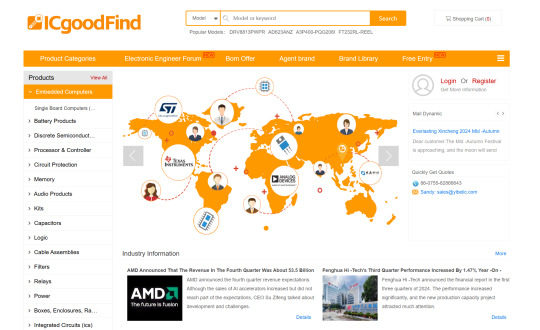
In terms of electronic component procurement, Yibeiic and ICgoodFind are your reliable choices. Yibeiic provides a rich variety of Xilinx products and other types of electronic components. Yibeiic has a professional service team and efficient logistics and distribution to ensure that you can obtain the required products in a timely manner. ICgoodFind is also committed to providing customers with high-quality electronic component procurement services. ICgoodFind has won the trust of many customers with its extensive product inventory and good customer reputation. Whether you are looking for Xilinx's FPGA, Zynq, or Versal series products, or electronic components of other brands, Yibeiic and ICgoodFind can meet your needs.
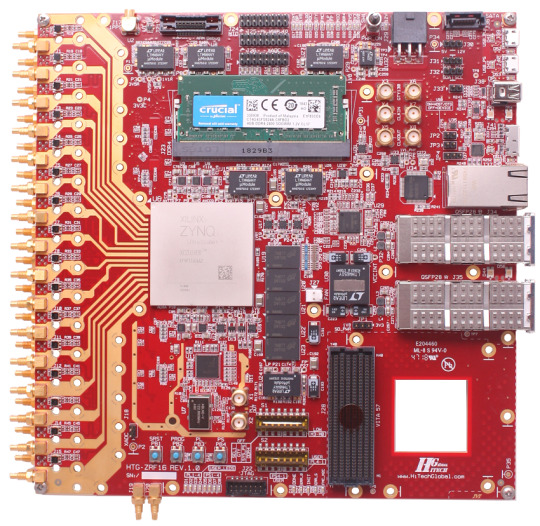
Summary by Yibeiic and ICgoodFind: Xilinx (Xilinx) as an important enterprise in the field of programmable logic devices, its products have wide applications in the electronics industry. As an electronic component supplier, Yibeiic (ICgoodFind) will continue to pay attention to industry trends and provide customers with high-quality Xilinx products and other electronic components. At the same time, we also expect Xilinx to continuously innovate and bring more surprises to the development of the electronics industry. In the process of electronic component procurement, Yibeiic and ICgoodFind will continue to provide customers with professional and efficient services as always.

3 notes
·
View notes
Text
Character Intro: Ascalaphus (Kingdom of Ichor)









Nicknames- My boy by Acheron
Darling by Orphne
Age- 17 (immortal)
Location- The Underworld
Personality- He's a broody yet eccentric young god who loves intellectual pursuits, gothic aesthetics, & a deep appreciation for classic literature and art. He's currently single.
He has the standard abilities of a god. His other powers/abilities include limited chlorokinesis (as it pertains to plants & flowers native to the Underworld), limited necromancy, being able to communicate with/shapeshift into a screech owl, limited umbrakinesis (shadow manipulation), and limited hydrokinesis (as it pertains to the waters of his father's river).
Ascalaphus is the only child of his parents- Acheron (Titan god of pain) & Orphne, a lampade.
He lives with his parents at their mansion in the Underworld. Ascalaphus' room is on the third floor. The bedroom door is built out of blackwood & there's also a terrace where he can overlook his father's river. The flooring is black marble while the walls are brimstone- covered in posters of his favorite bands, singers, movies, and deities. Instead of a laptop, there's an antique typewriter. In his room there's a simple trundle bed covered in dark blue satin pillows & black quilts, white onyx shelves for his book collection, as well as his blue-black iCHOR Tech wireless speaker that's automatically connected to Musify.
Ascalaphus is his father's twin with their olive skin, brown-black eyes, and facial features with the only difference being their frames. Acheron has a lean muscular build while his son has a bit more muscle. He feels like his mother feels left out because she doesn't look like them with her brilliant dark blue eyes, dark obsidian skin, and thick curly hair.
He's fluent in Latin.
He keeps his ink black hair short & shaggy.
Ascalaphus has a few tattoos- large owl wings on his back, a pair of dark blue eyes (dedicated to his mom) on the inside of his left wrist, a skull surrounded by black dahlias on his right arm, and the quote "What nourishes me destroys me" written in latin on his left pec. His good friend Achlys (goddess of the death mist, poison, misery, & sadness) did the tattoos.
A go-to drink for him is beer. He also likes red wine, pomegranate brandy, his dad's jallab, his mom's homemade blackberry iced tea, ginger ale, hot chocolate, black tea, mineral water, and cola.
Ascalaphus primarily writes in cursive.
For breakfast he'll typically go to a corner store to get a sausage, egg, & cheese on a hero on toasted rye bread. If he's gonna be on time for school, he'll have a bowl of steel cut oats topped with dark chocolate chips and maple syrup, a bowl of Earthly Harvest raisin crunch cereal, or his mom's omelette- added with black olives, mushrooms, & ghost peppers.
Ascalaphus loves listening to classical, synth pop, folk, rock, heavy metal, rap, and death metal music. His favorite musical artists to listen to are Moros (god of doom), O, & the death metal rap band Death Theater- comprising of Hades, Charon (Ferryman of the Underworld), his friend Hypnos (god of sleep), and Thanatos (god of death). He also thinks that Pale Blu isn't too bad either.
He's currently a freshman at Polydegmon University, the most prestigious college in the Underworld. Ascalaphus has a full ride- a four year scholarship, thanks in part to his father as well as the king. He doesn't live on campus, an agreed compromise with his parents. Even though it's too early to declare a major, Ascalaphus is thinking about majoring in botany or art history.
Thus far his favorite class has been his gothic literature class taught by his professor- a lampade named Ms. Whiteveil. The sound of her velvet smooth voice while she reads poems and short passages automatically calms him.
He loves snacking on ash plum flavored gummy spiders. He also likes spicy mushroom flavored kettle cooked potato chips & black anise licorice twists.
Ascalaphus has a job of sorts. He tends to the garden of the king of the Underworld, Hades (god of the dead). The orchard is primarily filled with black dahlias, frost orchids, black thorned roses, and shadow blossoms. He actually likes working in the garden. It's one of the few moments where Ascalaphus is alone with his thoughts for self-reflection. He also doesn't mind the company of the king. Hades will bring him a small cup of dark roast coffee or will lend Ascalaphus a book from his extensive library.
He also earns extra money by picking up groceries for Geras (god of old age) & by dog-sitting Cerberus sometimes.
There's a small restaurant downtown in Plouton Square that makes the best jjajangmyeon (noodles & diced pork in black bean sauce). It's a frequent takeout order for him.
All though Ascalaphus loves his parents, he feels like they're keeping him on a tight leash, especially his father. They didn't even want him to live on campus in a dorm and they especially don't want him to leave or travel out of the Underworld to any of the other realms- Olympius in particular. The Realm of Darkness is all he ever knows and Ascalaphus just wants the chance to experience something new, something different.
At school his social circle consists of cyclopes named Osric, Sybil, & Quintessa (Tessa for short), a harpy named Xerxes, a lampade named Azura (a botany major), as well as mortals named Caspian (a art history major), Rosalind, and Venetia.
Ascalaphus in undecided about whether or not to join the University's fraternity. Osric is a member.
Outside of school he's real good friends with Theodon (god of reality, uncertainty, & fate). They hang out together all the time. They smoke weed sometimes (through use of a Stygian Iron bong) & Ascalaphus will invite Theo to play basketball with him, Osric, Xerxes, and Caspian every weekend at Shadowstone Park. Theodon even tagged along to Ascalaphus' first college party!
He really liked going to the film premier of Blooddancer with Theodon. Ascalaphus even got to briefly meet the director of the film Keres (goddess of violent death). The photo of them meeting is framed & on his dresser. He also saved the ticket stubs!
In the pantheon he's also friends with Despoina (goddess of the arcadian mysteries, frost, winter, & shadows).
Also in the pantheon Ascalaphus respects and admires Nyx (goddess of the night) Erebus (god of darkness), as well as his "honorary" aunts & uncles, the other Underworld river deities- Phlegethon (Titan god of fire), Lethe (Titaness of forgetfulness, oblivion, & concealment), Styx (Titaness of hatred), and his godfather Cocytus (Titan god of wailing & lamentation).
He also admires Favian (god of philosophy) & is a fan of his steampunk historical fantasy book series The Machinery of Alchemists.
The iCHOR Tech soundproof headphones are great when Ascalaphus is working on an assignment or blocking out the sounds of his parents' lovemaking.
Sometimes (without his parents knowing), Ascalaphus will travel out-of-realm to Olympius to pick up Theodon from school. He pretends not to care as Theo drones on and on about a fellow schoolmate Heimarmene (Marnie) (goddess of shared fate). One day while Ascalaphus was waiting for Theo where he noticed him walking down the school's steps with Marnie and another girl. He thought she looked like winter's light with her flawless pale skin and shimmery silver eyeshadow on her eyelids. Her smile was just as bright as she tucked away strands of her short bouncy golden light brown hair behind her hair. When Ascalaphus asked Theo about her when he got in the car, he said that she was Marnie's best friend Eiresione (Ren) (goddess of offerings).
His favorite frozen treat is dark chocolate ice cream topped with pomegranate syrup, dark chocolate chips, and whipped cream.
Aside from wanting to freely travel to Olympius, Ascalaphus also wants to check out the Electric Wonderland music festival after looking it up online.
His favorite dessert is his mom's black rum cake. She makes it every year for his birthday and on the Winter Solstice.
Ascalaphus is not ashamed about the fact that he's still a virgin. He wants to wait until he's emotionally connected with someone to have sex. He did make out with an empousa named Elidi at the college party.
His all time favorite meal is his dad's hearty lamb stew with saffron rice and his mom's scorched chicken.
In his free time Ascalaphus enjoys playing video games, reading, skateboarding, writing, snowboarding, gardening, skiing, ice hockey, cooking (with his parents), ink painting, going to museums, chess, listening to music, and going to the cinema. He's also been getting into photography.
"Owls inspire us to see beyond the darkness and find our own light."
#my oc#my character#oc character#my oc character#oc intro#character intro#oc introduction#character introduction#modern greek gods#modern greek mythology#greek myth retellings#greek gods#greek myths#greek pantheon#greek mythology
3 notes
·
View notes
Text
Another thing i was thinking about is androids having to work with other androids. We got an idea of how androids usually interacts with other androids, at least in Shades of Color. But what if we got an android team with a human commander and these androids need to work together and help each other without the human having to give every single order like "help the other plastic"?
I hope it's a thing even if they got different tasks in the moment. Doesn't needa be a chat or talking loud, wireless communication is a communication.
Be in mind i ain't talking about deviant androids. I'm talking, for example, construction workers. What if they got a task that needs 2 or more androids cooperating and we ain't got a human in there? That's what i'm talking about. Cooperation among androids to finish a task given should be standard procedure depending on 'em work.
2 notes
·
View notes
Text
This day in history

On September 22, I'm (virtually) presenting at the DIG Festival in Modena, Italy. That night, I'll be in person at LA's Book Soup for the launch of Justin C Key's "The World Wasn’t Ready for You." On September 27, I'll be at Chevalier's Books in Los Angeles with Brian Merchant for a joint launch for my new book The Internet Con and his new book, Blood in the Machine.

#20yrsago You Might Be An Anti-Spam Kook If… https://www.rhyolite.com/anti-spam/you-might-be.html
#20yrsago IEEE members: save democracy from a broken standards-committee! https://web.archive.org/web/20030922031714/https://www.eff.org/Activism/E-voting/IEEE/
#15yrsago American Psychological Association members can’t aid in military torture https://web.archive.org/web/20080805001530/https://www.apa.org/governance/resolutions/work-settings.html
#15yrsago Welcome to Fear City: a guide to scare tourists away from NYC https://www.flickr.com/search/?w=58226389@N07&q=fear city
#10yrsago NSA contracted with notorious French spy-tech company VUPEN https://www.muckrock.com/news/archives/2013/sep/17/nsas-contract-vupen-darth-vader-cybersecurity/
#10yrsago Asbestos-bound first edition of Fahrenheit 451 https://web.archive.org/web/20160316135700/https://www.ebay.com/itm/190905167150?ssPageName=STRK%3AMESELX%3AIT&_trksid=p3984.m1555.l2649
#10yrsago Report shows how the anti-SOPA fight came from the bottom up https://papers.ssrn.com/sol3/papers.cfm?abstract_id=2295953
#5yrsago Ted Chiang lecture on interspecies communications https://www.youtube.com/watch?v=Y7rkojpnwOE
#5yrsago Your wireless carrier is definitely throttling video, but not because of network congestion (Verizon’s the worst) https://www.vice.com/en/article/bjanw5/wireless-carriers-throttle-video-for-no-good-reason-researchers-find
#5yrsago My closing Decentralized Web Summit keynote: “Big Tech’s problem is Big, not Tech” https://decentralizedweb.net/videos/keynote-cory-doctorowbig-techs-problem-is-big-not-tech/
#5yrsago Your life will be better if you turn off push notifications (and all notifications) https://www.vice.com/en/article/7xjb79/turn-off-push-notifications
#5yrsago 30 years after cyberpunk, Japan is still the (greying, insular, shrinking, climate-wracked) future https://offramp.sciarc.edu/articles/a-slow-utopia
#5yrsago Rice University eliminates tuition for all but wealthiest students, makes housing free for poorest https://www.npr.org/2018/09/18/649160232/rice-university-says-middle-class-students-wont-have-to-pay-tuition
#5yrsago Cloud computing and DRM: a match made in hell https://web.archive.org/web/20180918200400/https://publicknowledge.org/news-blog/blogs/its-always-drms-fault
#5yrsago 3D print this Harriet Tubman stamp and fix all those twenties that Mnuchin forgot to take Andrew Jackson off of https://tubmanstamp.com
#5yrsago Anita Hill on how sexual harassment allegations should be handled https://www.nytimes.com/2018/09/18/opinion/anita-hill-brett-kavanaugh-clarence-thomas.html
#5yrsago Kalamazoo criminalizes homelessness, arrests city commissioner and other activists https://www.mlive.com/news/kalamazoo/2018/09/police_arrive_at_bronson_park.html
#5yrsago Denmark’s largest bank laundered €200B through its Estonian branch, ignoring glaring warning signs https://www.ft.com/content/cbc4b02a-bbda-11e8-8274-55b72926558f
#5yrsago Germany’s far-right top spy just lost his job after gaslighting the country about right-wing, violent mob https://amp.theguardian.com/world/2018/sep/18/germanys-domestic-spy-chief-hans-georg-maassen-chemnitz
#1yrago How to ditch Facebook without ditching your friends https://pluralistic.net/2022/09/19/interoperable-facebook/#federated


6 notes
·
View notes
Text
Wireless Keyboards are good?
In today's fast-paced digital world, efficiency and convenience are paramount. As technology continues to evolve, so do the tools we use to interact with it. One such tool that has seen significant advancements in recent years is the humble keyboard. While traditional wired keyboards have been the standard for decades, wireless keyboards are gaining popularity for their flexibility, mobility, and overall user experience.
Wireless keyboards, as the name suggests, operate without the need for physical cables connecting them to a computer or other devices. Instead, they utilize wireless technologies such as Bluetooth or RF (radio frequency) to communicate with the device they are paired with. This simple yet powerful innovation has revolutionized the way we interact with our computers, tablets, and even smartphones. Here are several reasons why wireless keyboards are a good choice for modern users:
Enhanced Mobility:
Perhaps the most obvious advantage of wireless keyboards is their freedom of movement. Without being tethered to a device by a cable, users can position their keyboard wherever they find most comfortable, whether it's on a desk, in their lap, or even across the room. This flexibility is especially beneficial for those who frequently switch between devices or work in unconventional settings.
Clean and Clutter-Free Setup:
Say goodbye to tangled cables cluttering your workspace. Wireless keyboards eliminate the need for unsightly wires, creating a cleaner and more organized environment. This not only improves the aesthetic appeal of your workspace but also reduces the risk of accidents such as tripping over cables or inadvertently pulling devices off the desk.
Versatility:
Wireless keyboards are compatible with a wide range of devices, including desktop computers, laptops, tablets, and smartphones. This versatility allows users to easily switch between devices without having to invest in multiple keyboards or adapters. Whether you're typing up a document on your computer or responding to emails on your tablet, a wireless keyboard provides a seamless typing experience across all your devices.
Easy Setup and Installation:
Setting up a wireless keyboard is a breeze. Most modern devices feature plug-and-play functionality, meaning they can be paired with your device with just the push of a button. There's no need to fuss with drivers or software installations—simply turn on your keyboard, pair it with your device, and you're ready to start typing. A few keyboards accompany extra elements or adjustable settings. If you lost a dongle you can check how to do pairing without a dongle.
Compact and Portable:
Many wireless keyboards are designed to be slim and lightweight, making them ideal for users on the go. Whether you're a frequent traveler or simply prefer to work in different locations throughout the day, a wireless keyboard can easily slip into your bag or backpack, allowing you to take your productivity with you wherever you go.
Improved Ergonomics:
Some wireless keyboards are ergonomically designed to provide greater comfort during extended typing sessions. Features such as split key layouts, adjustable tilt angles, and wrist rests can help reduce strain and fatigue, promoting healthier typing habits in the long run.
Customization Options:
Many wireless keyboards offer customizable features such as programmable keys, backlighting, and multimedia controls, allowing users to tailor their typing experience to suit their individual preferences and workflow.
While wireless keyboards offer numerous advantages, it's important to consider potential drawbacks as well. Battery life, connectivity issues, and compatibility concerns are factors that users should be mindful of when choosing a wireless keyboard. Additionally, some users may prefer the tactile feedback and reliability of traditional mechanical keyboards.
In conclusion, wireless keyboards are an excellent choice for users seeking convenience, flexibility, and enhanced productivity in their computing experience. With their wireless connectivity, sleek design, and versatile functionality, wireless keyboards are well-suited to meet the demands of today's modern lifestyles. Whether you're a busy professional, a student on the go, or simply someone who values simplicity and ease of use, a wireless keyboard is sure to enhance your typing experience.
2 notes
·
View notes
Text
Ensuring Regulatory Compliance for Wireless Devices
Regulatory Framework
Regulatory compliance for wireless devices is governed by various national and international authorities. In the United States, the Federal Communications Commission (FCC) plays a pivotal role in setting and enforcing regulations related to wireless devices. The FCC establishes guidelines for electromagnetic compatibility, radio frequency emissions, and more, to prevent interference and protect consumers.
Wireless Standards

Compliance with established wireless standards is fundamental to ensuring device interoperability and safety. Two widely recognized standards organizations are the Institute of Electrical and Electronics Engineers (IEEE) and the Wi-Fi Alliance. Devices must meet these standards to ensure that they can effectively connect to wireless networks and function correctly.
Radio Frequency (RF) Emissions
One of the primary concerns in wireless device compliance is the emission of radio frequency signals. Wireless devices must not emit harmful interference that can disrupt other wireless networks or devices. Manufacturers are required to conduct extensive testing to ensure their products conform to permissible RF emissions limits.
Electromagnetic Compatibility (EMC)
EMC compliance is crucial to prevent electromagnetic interference between wireless devices and other electronic equipment. Compliance ensures that wireless devices can coexist harmoniously with other electronic devices, enhancing user experience and preventing conflicts.
SAR (Specific Absorption Rate)
SAR measures the amount of radio frequency energy absorbed by the human body when using a wireless device. To protect users from excessive exposure to radio waves, regulatory bodies establish maximum SAR limits. Manufacturers must test and disclose the SAR levels of their products, enabling consumers to make informed choices.
Product Labeling and Certification
Regulatory compliance often requires manufacturers to obtain certification for their wireless devices. These certifications, such as FCC, CE (for European markets), or other regional certifications, demonstrate that a product meets all relevant safety and performance standards. Labeling on the device indicates its compliance status, ANATEL Certification for Brazil allowing consumers to identify certified products easily.
Security and Privacy Compliance
As wireless devices collect and transmit sensitive data, ensuring data security and privacy is a critical aspect of regulatory compliance. Regulations such as the General Data Protection Regulation (GDPR) in Europe and various data protection laws worldwide mandate that manufacturers take appropriate measures to safeguard user data.
Over-the-Air (OTA) Updates
OTA updates are crucial for maintaining the security and functionality of wireless devices. Manufacturers must design their devices to facilitate secure and regular updates, ensuring that vulnerabilities are promptly addressed.
User Education
Compliance isn't solely the responsibility of manufacturers and regulators; consumers play a vital role. Users should stay informed about the regulatory requirements for their wireless devices, including firmware updates and proper usage. Understanding the potential risks and best practices can enhance the overall safety and performance of these devices.
2 notes
·
View notes
Text
The Latest Wi-Fi 7 Lands Dimensity 9300 & 9200+ and 9200!
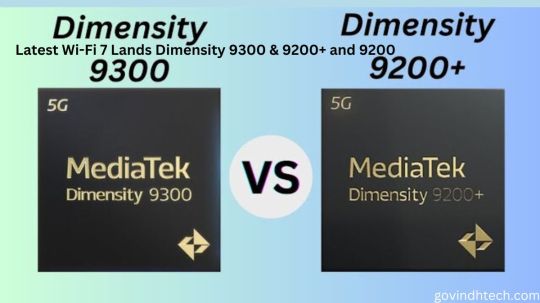
The latest Wi-Fi 7 accreditation has been delivered at the Broadcom Dimensity 9300 & 9200+ and 9200
MediaTek, a Dimensity 9300 & 9200+ and 9200 are the three first-wave smartphones manufacturers the fact that were recently acknowledged with Wi-Fi 7. These processing units are going to enable you to take advantage of into the possibilities of tomorrow. In order to get unrivaled connection and performance, you should investigate their breakthrough tri-band technology, MLO and MRU features, and Xtra Range 2.0.
Achieving Wi-Fi 7 certifications issued by the Bluetooth Alliance (WFA) is an enormous success for MediaTek’s Dimensity 9300 and 9200 & 9200+ collection of products. Within additionally reiterating its commitment to delivering revolutionary connection capabilities that are complying with contemporary communication standards, the accreditation in addition highlights the Dimensity series’ stance as a technological leading in the mobile device chip sector.
Wi-Fi 7 Technology Overview for the MediaTek Dimensity 9300 & 9200+ and 9200
Marvel with Three Bands:
The smartphones Dimensity 9300 & 9200+ and 9200 have been provided with tri-band technology, which enables computers to keep working without hindrance throughout wavelengths of 2.4, 5 and 6 GHz. It additionally renders it practicable to send and receive data over several bands at the identical time, which strengthens connection as well as rendering the user experiences more seamless.
Increased Carrier Throughput: The Wi-Fi 7 technological advances than can be found in the Dimensity 9300 and 9200 is two times as wide as the previous Wi-Fi 6/6E protocol which had been previously in use. It can handle up to 320MHz of channel bandwidth. Consequently, this results in speeds that are up to 2.4 times quicker, so offering customers with connection that is both quick and dependable.
Wifi 7 adds further generational benefits, such as MLO (Medium Low) technology and Multi-User Resource Unit (MRU) capabilities. These advantages are referred to as generational advantages. Particularly in highly crowded networking situations, these characteristics jointly prevent connecting latency as well as improve the performance of The mesh networking purposes, while preventing signal degradation from occurring.
Introducing the exclusive MediaTek Xtra Range 2.0:
Xtra Range 2.0 technology, which is a distinctive feature, contributes greatly to the enhancement of interior coverage. Users are now able to comfortably penetrate interior barriers and enjoy connection that extends up to 4.5 meters longer. In-home and office coverage and performance are both improved as a result of this upgrade.
Real-world scenarios that highlight the benefits of the MediaTek Dimensity Wi-Fi 7
Uninterrupted Streaming and Multiplayer Gaming:
Streaming high-definition material and playing games that need a lot of graphics became more smooth experiences as a result of the improved channel capacity and the decreased latency. When it comes to entertainment on mobile devices, the Dimensity 9300 & 9200+ and 9200 set new benchmarks.
Your connection will stay strong even in the most remote areas of your house or workplace thanks to the Xtra Range 2.0 technology, which guarantees that your home or business will have improved connectivity. Through MediaTek’s dedication to improving interior coverage, there will be no more dead zones.
Efficient Mesh Networking: Mesh networking is made more efficient by the presence of MLO technology and MRU capability working together. In order to create a network that is flexible enough to accommodate a wide range of use situations, devices are able to connect with one another more efficiently.
In other words, frequently asked questions (FAQs)
What exactly is the Wi-Fi 7 certification, and why is it so important for mobile devices like smartphones?
Wi-Fi 7 certification verifies that a device satisfies the most recent and cutting-edge wireless standards. This certification is granted by the Wi-Fi Alliance. This certification assures that smartphones such as the Dimensity 9300 & 9200+ and 9200 are compatible with worldwide wireless rules, as well as providing cutting-edge connection and rapid speeds.
What are the advantages that users get from tri-band technology?
The Dimensity 9300 and 9200 products use tri-band technology, which enables simultaneous data transmission over the 2.4GHz, 5GHz, and 6GHz bands. Because of this, connection is improved, congestion is significantly reduced, and the overall user experience is improved.
Could you provide more information on the Xtra Range 2.0 technology?
MediaTek’s Xtra Range 2.0 technology is an innovative feature that gives the company the ability to expand its interior coverage by up to 4.5 meters farther. Because it is able to penetrate interior walls, it allows for a huge improvement in connection in both homes and workplaces.
When it comes to practical applications, what are the benefits of a decreased connection latency?
Online activities such as gaming and video conferencing may benefit from a reduction in connection latency, which assures faster reaction times. Real-time apps are able to provide users of the Dimensity 9300 & 9200+ and 9200 with a lag-free experience.
In what ways does the functionality of MRU contribute to the networking of Mesh?
Mesh networking is improved by the features of Multi-User Resource Units (MRU), which allow for more effective resource management. It is possible for devices inside the network to interact more efficiently, which ultimately results in a connection that is both smooth and responsive.
Is the MediaTek Dimensity 9300& 9200+ and 9200 Wi-Fi 7 technology compatible with technology that was released in the past?
Users are able to connect to a broad variety of devices without any problems thanks to the fact that the Wi-Fi 7 technology that is included in the Dimensity 9300 & 9200+ and 9200 is backward compatible with earlier Wi-Fi standards.
An important turning point in the history of smartphone connection has occurred with the MediaTek Dimensity 9300& 9200+ and 9200 obtaining certification for Wi-Fi 7. These chips are already at the vanguard of innovation thanks to their tri-band technology, improved channel bandwidth, and special features such as Xtra Range 2.0. To further reinforce MediaTek’s position as a market leader, users can expect an unsurpassed connection experience, regardless of whether they are streaming content, playing games, or working.
Read more on Govindhtech.com
#technology#govindhtech#technews#news#wi fi 7#mediatek#MediaTek Dimensity#MediaTek Dimensity 9300#MediaTek Dimensity 9200#Xtra Range 2.0 technology
3 notes
·
View notes
Text
Enlightening the Future: The Wonders of LED Lighting
In this blog post, we will delve into the captivating realm of LED lighting, examining its many advantages, diverse applications, and its pivotal role in forging a more sustainable and energy- conscious future.
The Evolution of Illumination
Before we explore the myriad advantages of LED lighting, it's important to appreciate the historical context. For many decades, incandescent bulbs dominated the lighting landscape, casting warm but highly inefficient light. These bulbs were notorious for generating excessive heat and consuming copious amounts of energy.
In the mid-20th century, fluorescent lighting emerged as a more energy-efficient alternative, but it had its share of drawbacks, including the presence of hazardous materials like mercury. However, the 21st century ushered in the era of LEDs, which addressed these issues and introduced a host of transformative benefits.
Advantages of LED Lighting
Energy Efficiency: LEDs are astoundingly energy-efficient, using up to 80% less energy than traditional incandescent bulbs. As a result, you save a lot on your electricity bill.
Longevity: LED bulbs boast an impressive lifespan, often exceeding 25,000 hours or more. This results in less waste and fewer replacements.
Durability: LEDs are solid-state lighting devices, making them more robust and resilient to shocks and vibrations compared to fragile incandescent and fluorescent bulbs.
Instant Illumination: LEDs provide instant brightness without the warm-up time associated with some other lighting technologies.
Color Variety: LEDs are available in a wide range of colors and color temperatures, facilitating creative and customized lighting solutions.
Environmental Friendliness: LEDs are environmentally responsible, emitting less heat and containing no hazardous materials. Their lower energy consumption also contributes to reduced greenhouse gas emissions.
Applications of LED Lighting
The versatility of LED lighting is reflected in its extensive range of applications, reshaping diverse industries and enhancing our everyday experiences. Here are some noteworthy uses:
Home Lighting: LED bulbs are widely used for general lighting, accent lighting, and even integrated into smart lighting systems that can be controlled remotely for convenience.
Commercial and Industrial Lighting: LEDs have become indispensable in warehouses, offices, factories, and retail spaces due to their energy efficiency and long life.
Street Lighting: Many municipalities have adopted LED streetlights to save energy and improve nighttime visibility.
Automotive Lighting: LED headlights, taillights, and interior lighting have become the standard in modern vehicles for their brightness and energy efficiency.
Entertainment and Decorative Lighting: LEDs are the go-to choice for creating captivating and dynamic lighting displays at concerts, events, and theme parks.
Healthcare and Horticulture: LEDs play a pivotal role in healthcare for surgical lighting and horticulture for controlled plant growth.
The Future of LED Lighting
The future of LED lighting holds immense promise. With advancing technology, we can anticipate even more energy-efficient, intelligent, and sustainable lighting solutions.
Smart Lighting Integration: Seamless integration with smart home systems will offer personalized lighting experiences, enhancing comfort and energy savings.
Human-Centric Lighting: LEDs will increasingly mimic natural daylight, supporting circadian rhythms and promoting overall well-being.
Li-Fi Technology: LEDs may play a significant role in Li-Fi, a technology that uses light waves for high-speed wireless communication.
Sustainable Design: LEDs will be prominently featured in sustainable architectural and interior designs, further reducing energy consumption and environmental impact.
Conclusion
LED lighting has not only illuminated our surroundings but has also brightened the path to a more energy-efficient and sustainable future. From the coziness of our homes to the brilliance of city streets, LEDs have transformed the way we see the world. As technology continues to evolve, we can eagerly anticipate innovative advancements and applications in the realm of LED lighting, all contributing to a greener and more comfortable planet for generations to come. So, embrace the brilliance of LEDs and be a part of the enlightened future of illumination!
Abhay V Shah.
CEO
Hozon Tech Innovation Private Limited
Mumbai
#LEDLighting#EnergyEfficiency#SustainableTech#GreenTech#LightingSolutions#SmartLighting#EnergySavings#EcoFriendly#GreenLiving#FutureOfLighting#LightingDesign#LEDAdvancements#CleanEnergy#EnvironmentallyFriendly#LightingTechnology#BrightIdeas#EfficientLighting#Sustainability#GreenInnovation#LEDBenefits
4 notes
·
View notes